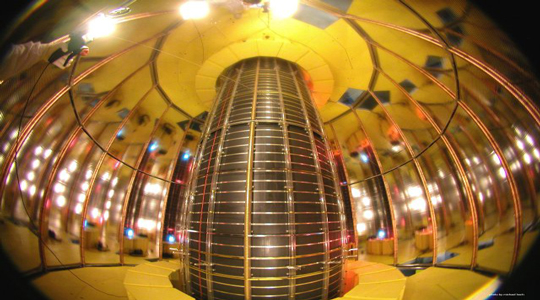 A team of physicists from the INFN working on ALICE (A Large Ion Collider Experiment), have confirmed with unprecedented precision the symmetry of a fundamental property of the nuclei of matter and antimatter: their mass. The study has been published in Nature Physics, the first time this journal has dedicated an article to ALICE. In the ALICE experiment, researchers were able to select a sample of one million antideuteron nuclei and thousands of nuclei of the light antihelium isotope. They then measured the difference in their mass compared to the corresponding nuclei of matter. This difference, allowing for experimental uncertainty, was found to be equal to zero. This measurement by ALICE comes 50 years after the experiment at CERN by a group of scientists led by Antonino Zichichi. It represents a significant improvement on existing measurements of the mass difference between nuclei and anti-nuclei with a precision of 1/10000 for the anti-deuteron and 1/1000 for anti-helium. To perform this high-precision measurement, physicists at the INFN built a detector that represents the new frontier of technology. The TOF (Time Of Flight) detector is like a giant chronometer that measures the time it takes for a particle produced in a collision to reach the detector, about 4 m away. The TOF detector determined this arrival time with a resolution of 80 picoseconds (80 thousandths of a billionth of a second). Besides confirming the existence of states of aggregate antimatter, first discovered 50 years ago, this experiment also shows that it behaves like ordinary matter.
A team of physicists from the INFN working on ALICE (A Large Ion Collider Experiment), have confirmed with unprecedented precision the symmetry of a fundamental property of the nuclei of matter and antimatter: their mass. The study has been published in Nature Physics, the first time this journal has dedicated an article to ALICE. In the ALICE experiment, researchers were able to select a sample of one million antideuteron nuclei and thousands of nuclei of the light antihelium isotope. They then measured the difference in their mass compared to the corresponding nuclei of matter. This difference, allowing for experimental uncertainty, was found to be equal to zero. This measurement by ALICE comes 50 years after the experiment at CERN by a group of scientists led by Antonino Zichichi. It represents a significant improvement on existing measurements of the mass difference between nuclei and anti-nuclei with a precision of 1/10000 for the anti-deuteron and 1/1000 for anti-helium. To perform this high-precision measurement, physicists at the INFN built a detector that represents the new frontier of technology. The TOF (Time Of Flight) detector is like a giant chronometer that measures the time it takes for a particle produced in a collision to reach the detector, about 4 m away. The TOF detector determined this arrival time with a resolution of 80 picoseconds (80 thousandths of a billionth of a second). Besides confirming the existence of states of aggregate antimatter, first discovered 50 years ago, this experiment also shows that it behaves like ordinary matter.







